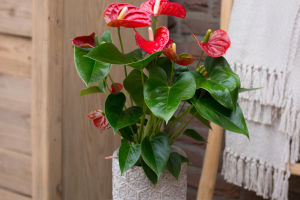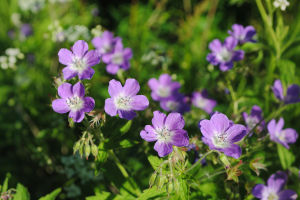Have you ever noticed that some plants seem to grow effortlessly while others barely thrive? Growing healthy, blooming plants is not just about watering them—it’s about understanding what makes them flourish.
By paying attention to six key factors, we can help our plants grow faster, bloom more beautifully, and stay healthy for longer. Let’s dive into each factor and see how we can give our plants the best care possible.
How Do Plants Grow?
To start, we need to understand what plant growth really means. Plants grow as new cells form and existing cells expand. This process depends on a balance between photosynthesis and respiration. Photosynthesis happens in green leaves and converts sunlight into sugars using carbon dioxide. These sugars are then “burned” during respiration to release energy, which fuels growth. In simple terms, healthy growth comes from producing enough energy and nutrients to support new leaves, stems, and flowers.
Water Supply: Essential for Healthy Growth
Water is one of the most important factors for plant growth. Plants absorb water through their roots, and it is used to transport nutrients from the soil to the entire plant. The bigger and stronger the root system, the more water and nutrients the plant can absorb. Maintaining a stable soil pH is also critical because extreme pH levels can damage roots and reduce nutrient uptake.
Overwatering can suffocate roots, while underwatering can cause drooping leaves and stunted growth. Observing the leaves for signs of stress and checking soil moisture regularly helps us keep the water balance just right.
Nutrients: Feed the Plants, Not Overfeed
Nutrients are essential for plant development, but more is not always better. Many nutrients are naturally available in the air and soil. Fertilizers contribute to about 6% of growth, so overfertilizing can actually slow down development and harm the plant. We should provide nutrients in balanced amounts, using slow-release fertilizers or liquid supplements when necessary. Keeping an eye on the plant’s leaves and stems helps us adjust feeding as needed—yellowing leaves may indicate nutrient deficiency, while overly lush growth could mean overfeeding.
Light: The Energy Source
Light is crucial for photosynthesis, which produces the sugars plants need to grow. Without enough light, growth slows, particularly in roots, which reduces nutrient absorption. For optimal growth, provide several hours of bright light daily. For indoor plants, bright indirect light often works best, while outdoor plants thrive under direct sunlight. Rotating plants occasionally ensures all leaves receive adequate light, preventing weak growth on one side.
Oxygen and Carbon Dioxide: The Breath of Life
Roots need oxygen to function properly. If the soil is waterlogged, oxygen is displaced, which can lead to root rot and weak growth. Carbon dioxide, on the other hand, is abundant in the air and is required to produce sugars during photosynthesis. We can improve root health by ensuring proper soil aeration and avoiding overwatering. For potted plants, using soil with good drainage and occasionally loosening the top layer helps roots “breathe” better.
Temperature: Finding the Sweet Spot
Temperature has a major effect on plant growth. Most plants grow best when the soil is around 20°C (68°F). When temperatures rise above 30°C (86°F), photosynthesis slows, and growth may be negatively affected. Cold temperatures can also slow growth, flowering, and fruiting. Maintaining plants in their optimal temperature range ensures steady development, healthier roots, and more vibrant blooms. Using mulch outdoors or moving indoor plants away from drafts or heat sources can help maintain the right temperature.
Air Humidity: Striking the Right Balance
Humidity affects both water movement and plant health. High humidity slows evaporation from leaves, reducing water and nutrient flow from roots, and increases the risk of mold or fungal infections. Low humidity, on the other hand, can dry out leaves, leading to leaf burn and loss of chlorophyll. Maintaining moderate humidity keeps plants hydrated, supports nutrient transport, and minimizes stress. Using a humidifier indoors or grouping plants together can help maintain suitable humidity levels.
Bringing It All Together
Healthy plant growth and flowering depend on balancing all six factors: water, nutrients, light, oxygen/CO₂, temperature, and humidity. Ignoring even one factor can cause slow growth, weak roots, or poor flowering. By observing our plants closely, adjusting care, and creating optimal conditions, we give them the best chance to thrive. Regular monitoring allows us to react quickly to stress, ensuring our plants continue growing strong and blooming beautifully.
Helping Our Plants Thrive
Lykkers, growing plants is both a science and an art. Understanding these six factors helps us create the perfect environment for plants to flourish. By giving them proper water, nutrients, light, temperature, humidity, and oxygen, we can watch them grow faster and bloom more vibrantly. Caring for plants is truly rewarding, and seeing them thrive reminds us why gardening is such a joyful and satisfying hobby. Let’s follow these tips and enjoy the beauty of healthy, blooming plants every day!
How Plants Grow for Kids | Learn about photosynthesis and what plants need to grow strong
Video by Learn Bright


